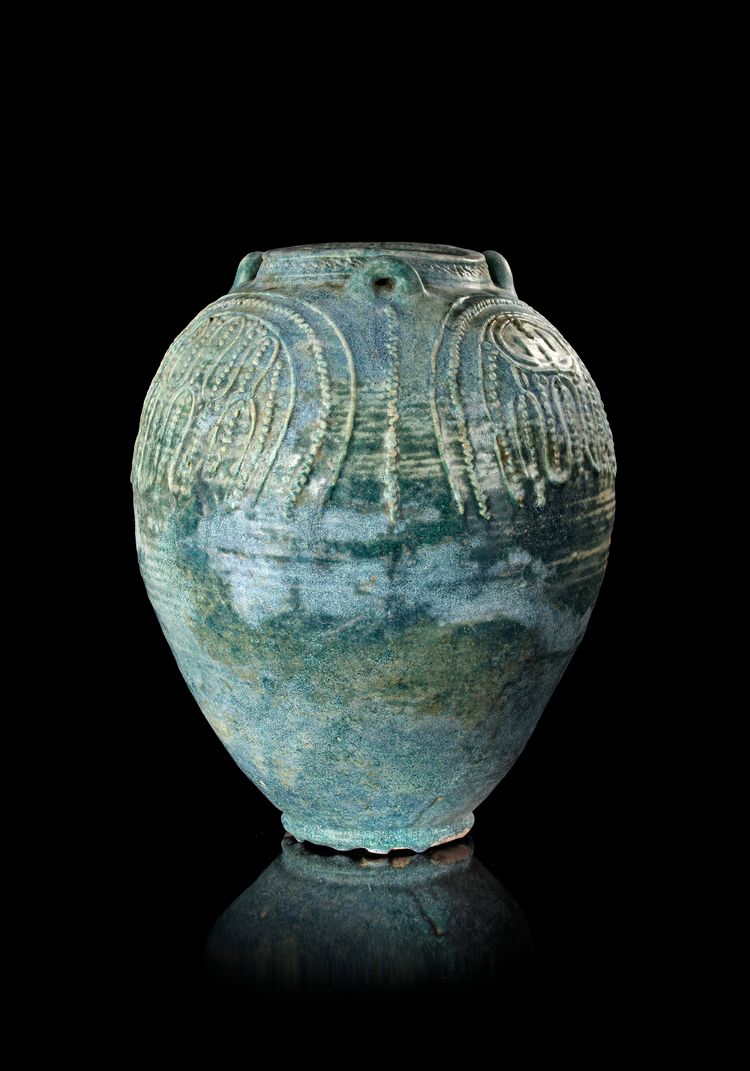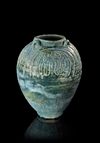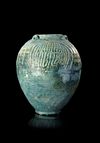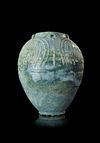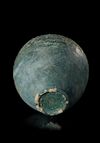A LARGE UMAYYAD TURQUOISE-GREEN GLAZED JAR, MESOPOTAMIA, 7TH-8TH CENTURY
The ovoid body moulded with arched bands of beading, the neck with three small handles.
Height 54 cm.
CATALOGUE NOTE
This type of alkaline-glazed pottery, intended for storage of food stuffs or drinking water, had been produced in kilns along the Upper Euphrates since at least the Parthian period continuing through the Umayyad and early Abbasid periods, with subtle changes in shape and design. The distinctive silvery iridescence offset by the turquoise glaze only adds to their decorative appeal. Their story is also fascinating, for examples have been found as far afield as Fujian province in China. A tomb at Lotus Peak on the outskirts of Fuzhou, dedicated to one Liu Hua, who died in A.D. 930, wife of King Wang Yangjun of the Min Kingdom (A.D. 909-945), yielded three similar turquoise-glazed jars, testament to the trading activities of Persian and Arab merchants along the southern coast of China at this time.
